The Kamori goat (also known as Gulabi goat) is a popular and beautiful breed of goat. It is a milk goat breed which is found in the Sindh province of Pakistan. Actually the Kamori goat is mostly found in the districts of Dadu, Nawabshah and Larkana in the Sindh province. It is also found in India and some other countries around the world.
The breed is mainly popular for it’s beautiful appearance and milk production. But the original Kamori goat is rare today, and is very expensive. Popularity of Gulabi goat or Kamori is increasing in the United States. Kamori is an excellent dairy goat breed from Pakistan. Review origin, characteristics, feeding, breeding and full breed profile of this goat breed below.
Kamori Goat Origin
The Kamori goat was originated from the Sindh region in Pakistan. These goats are often found in the rural areas of Pakistan, and people there use them mainly for their milk production. But their meat is also very popular and good in quality. However, the Kamori breed is believed to have been in Pakistan for a long time. It is known for it’s unique appearance, and also known as Gulabi goat. Kamori is a hardy goat breed and they can survive in hot and dry conditions of their native region.
Physical Characteristics
Kamori goats are easily characterized by their body type, color and beautiful appearance. They are famous for their distinctive body structure with long ears, neck and unique colors. They have a large body and a very distinctive coat color. Body of the purebred goats is dark brown in color with small coffee-colored or dark patches over their entire body. They have long and well developed body. And the udder and teats of the Kamori does are fairly developed. The breed is a medium to large goat breed. On average the bucks weight about 60 kg and the does about 50 kg.
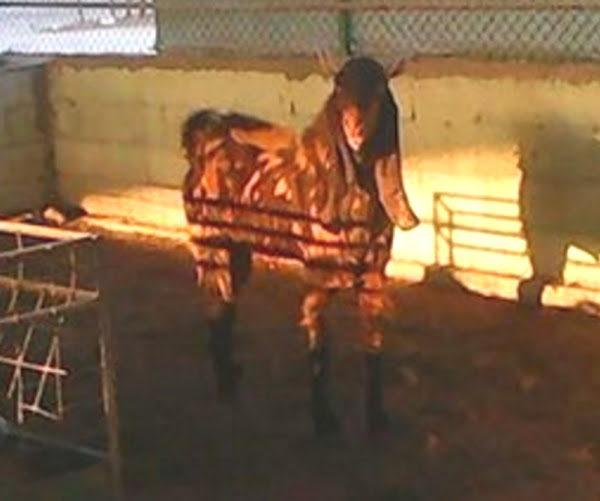
Housing Requirements
Arranging good housing facilities for the Gulabi goats is very important. On an average, a mature goat will require around 15-16 square feet of housing space. So, make your house depending upon the number of your goats. Ensure good ventilation system inside the house and always try to keep the house clean and dry. And always try to clean the house on a regular basis.
Dietary Requirements Of Gulabi Goat
Like all other goat breeds, feeding the Gulabi goats with very good quality and nutritious food is very important. Because, without adequate nutritious food, your goats will not grow well and stay healthy. So, always try to feed them adequate nutritious food, as much green foods as possible. And also provide them with enough clean and fresh drinking water.
Breeding/Reproduction
Like many other domestic goat breeds, the Gulabi goats are also naturally very good breeders. They will breed easily and produce kids if you keep good ratio of buck and does in the flock. Generally, 1 mature healthy buck is enough for breeding around or up to 25 does.
Caring
The Gulabi goats are very strong and hardy, and they generally require less caring and other management. Although, taking additional caring will help the goats to stay healthy, grow faster and produce more. So, try to take good care of your goats. Take extra care of the breeding bucks, pregnant does, nursing does and the kids. Vaccinate and de-worm them timely, and always keep good contact with a vet in your area.
Uses
Kamori goats are mainly raised as a dairy goat breed. Average milk production from a doe is approximately 1.5 liters. But they are also good for meat production.
Special Considerations
Purebred Kamori goat is very expensive and rare. Sometimes they are sold for a very high price mainly because of their uniqueness and rarity. There is also a less expensive version of this breed, which is a crossed version or hybrid. These goats have been crossed with Patairee goats for producing less expensive version which is similar to the Kamori’s in body structure. Patairee is another goat breed form Pakistan, but mainly found in Sindh province. Today the hybrid Kamori goat is also becoming popular among the people, mainly because of it’s beautiful colors and appearance and less price compared to pure goats.
| Breed Name | Kamori |
| Other Name | Also known as Gulabi goat |
| Breed Purpose | Mainly raised for milk production, but also suitable for meat production. |
| Breed Size | Medium to Large |
| Buck | About 60 kg |
| Doe | About 50 kg |
| Horns | Yes |
| Climate Tolerance | All Climates |
| Coat Color | Body of the purebred Kamori goats is dark brown in color with small coffee-colored or dark patches over their entire body. |
| Good for Stall Fed | Yes |
| Rarity | Rare |
| Country of Origin | Pakistan |
Frequently Asked Questions (FAQ)
The Kamori or Gulabi goat is a common and popular breed of domestic goat in India and Pakistan. It is a pretty old breed which was originated several decades ago in Pakistan, and mainly found in the districts of Dadu, Larkana, and Nawabshah. It is a dairy goat breed and raised mainly for milk production purpose. But they are also good for producing good quality meat. People are asking some questions regarding this goat breed. However, here we are trying to list the most common questions and trying to answer them. Hope you will find your answer. Don’t hesitate to ask us if you have more questions.
Is Kamori goat farming business profitable?
YES! Like other commercial goat breeds, raising Kamori goats is also very profitable. These goats require less care and other management and grow very well. So, commercial production of Kamori goats is profitable.
How to start Kamori goat farming business?
Starting commercial Kamori/Gulabi goat farming business is very easy and simple. It’s just like starting a goat farm with any other goat breeds. Purchase good quality goats, make a good shelter for them, feed them well, take good care and you are done. They will produce high quality meat.
What are Kamori goats used for?
Mainly for milk. Kamori is a dairy breed of domestic goat, and it is good for milk production. But they are also good for producing good quality meat.
How can you tell if a Kamori goat is pure?
Identifying a pure Kamori is relatively easy. The purebred Kamori/Gulabi goat is dark brown with small coffee-colored or dark patches over its entire body.
What is the price of Kamori goat?
Pure Kamoris are rare and expensive. Market price of live Kamori in Pakistan market is between 30,000 and 80,000 Pakistani rupee.
What is Kamori goat price in USA?
Around $700. Please search your local online classified websites.
How can you tell a Kamori goat?
They have a distinctive body structure with long ears and neck and a large body, and a distinctive color. The purebred Kamori goat is dark brown with small coffee-colored or dark patches over its entire body.
Any Kamori goat for sale near me?
Not sure! Please search your local online classified websites.
What are the purpose Kamori goat?
Kamori is a dairy goat breed. It is also good for meat production.
Is Kamori a dairy/milk goat?
YES, Kamori is a dairy goat breed and raised mainly for milk production purpose.
How much milk Kamori does produce per day?
Average milk production of a Kamori doe is around 1.5 liters per day.
Where did Kamori goat originated from?
Pakistan. From the Sindh province of Pakistan. But today, they are also available in some other countries outside of their origin place.
What is the color of Kamori goat?
Body of the purebred Kamori goats is dark brown in color with small coffee-colored or dark patches over their entire body.
How much a Kamori goat weight?
A mature buck weights around 60 kg, and a mature doe weights around 50 kg.
How long do Kamori goats live?
Average lifespan of a Kamori goat is between 10 and 12 years.
What are the characteristics of a Kamori goat?
Kamoris have a distinctive body structure with long ears and neck and a large body, and a distinctive color. The purebred Kamori goat is dark brown with small coffee-colored or dark patches over its entire body.
Is Kamori and Gulabi goats same?
YES! Kamori is also known as Gulabi goats.
What are gulabi goats good for?
Gulabi goats are one of the best goats for dairy production, and they are raised mainly for milk production. But they are also good for producing meat.

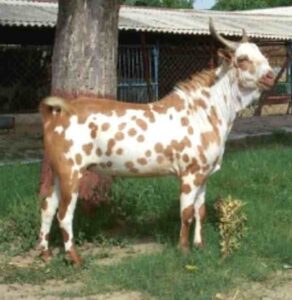

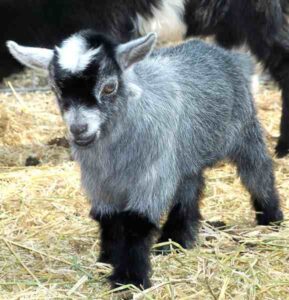
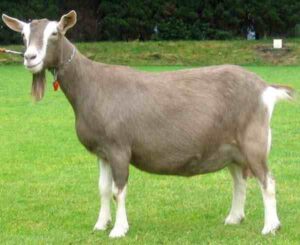

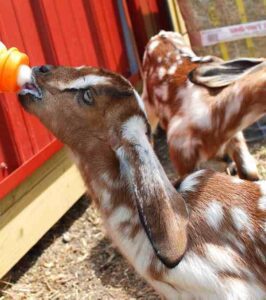
want to buy 50 kamori goat 1 year male